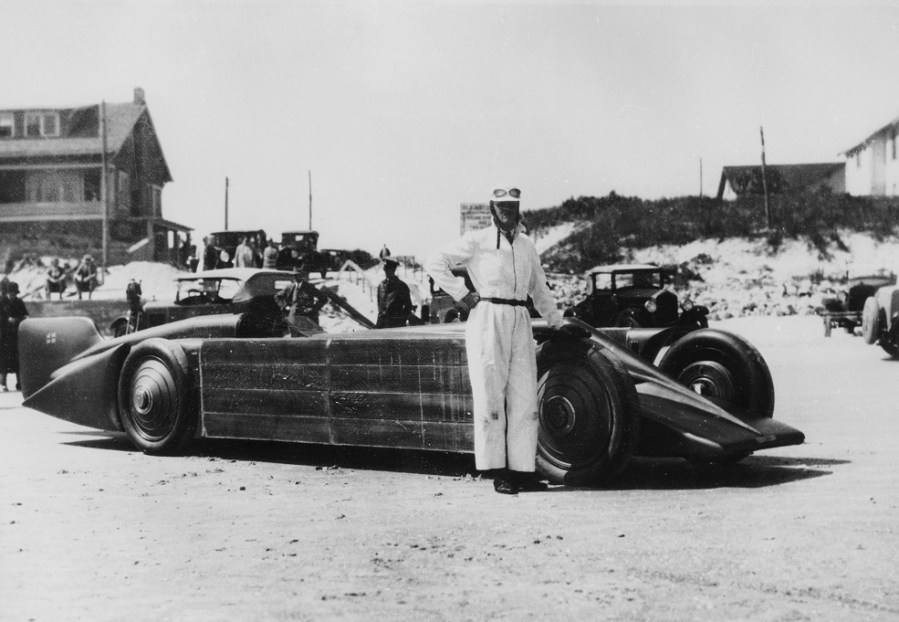The National Motor Museum at Beaulieu has been awarded almost £75,000 by Arts Council England to reinterpret the Land Speed Record-breaking icon Golden Arrow of 1929 – using computer generated augmented reality and historic collections to enhance engagement for visitors.
Powered by a 2.39-litre W12 Napier Lion aero engine, the distinctive 1929 Golden Arrow was a masterpiece of technology and Art Deco design expression, paving the way for two decades of unbroken British record-breaking success. With ex-Sunbeam racing driver Major Henry Segrave in the driving seat, the Arrow shattered the previous record and set a new Land Speed Record of 231.36mph on Daytona Beach. Segrave was killed while setting a water speed record the next year and Golden Arrow never ran again.
Today, Golden Arrow is on permanent display at the National Motor Museum in a multi-media presentation that also features its record-breaking stablemates the 1920 Sunbeam 350hp, 1927 Sunbeam 1000hp and 1960 Bluebird CN7. This project, entitled The Golden Arrow – Shot from the Past, Aimed at the Future, will complement the existing installation with a new display and interactive area. Research on the museum’s rich collections will provide content for digital media and reveal untold stories of the car and those involved with it. Work will begin in January and conclude in March 2022, with the refreshed display remaining on show.

The project will enable schools and universities to explore STEAM subjects (science, technology, engineering, arts and mathematics) through a focus on Golden Arrow and the museum will also offer craft sessions inspired by its design.
National Motor Museum Director of Collections & Engagement, Andrea Bishop, said: “I am delighted that Arts Council England is supporting this project, which delivers new learning opportunities for young people, a creative programme of craft sessions for adults and enhanced digital interaction in the museum. Alongside this, there will be fresh research into Golden Arrow and the collections relating to it, as well as some conservation work on particularly fragile items. This 90-year-old car will connect to new audiences by supporting educational initiatives and promoting well-being through creativity.”





